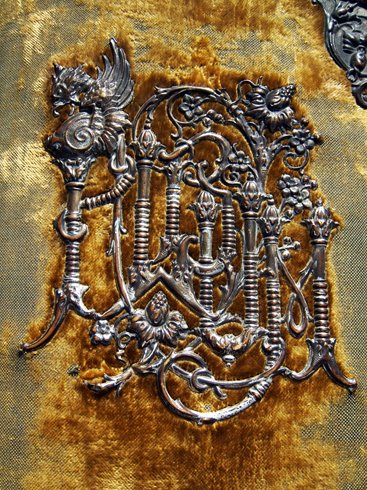Cool article from National Geographic. Follow the link to see more images from the photo set. Also, be sure to check out more of Charles Freger's photography.
Europe’s Wild Men
They become bears, stags, and devils. They evoke death but bestow fertile life. They live in the modern era, but they summon old traditions.
Photograph by Charles Fréger
A primal heart still beats in Europe. Deep beneath the gloss of
cell phone sophistication lie rituals that hark back to harvests and
solstices and fear of the winter dark. Monsters loom in this shadowy
heart, but so does the promise of spring’s rebirth and fertile crops and
women cradling newborn babes. It turns out that Europe—at least pockets
of it—has not lost its connection to nature’s rhythms.
That connection is rekindled during festivals that occur across the continent from the beginning of December until Easter. The celebrations correspond to Christian holidays, but the rituals themselves often predate Christianity. The roots are difficult to trace. Men—and until recently, it has almost always been men—don costumes that hide their faces and conceal their true forms. Then they take to the streets, where their disguises allow them to cross the line between human and animal, real and spiritual, civilization and wilderness, death and rebirth. A man “assumes a dual personality,” says António Carneiro, who dresses as a devilish careto for Carnival in Podence, Portugal. “He becomes something mysterious.”
Photographer Charles Fréger set out to capture what he calls “tribal Europe” over two winters of travel through 19 countries. The forms of the costumes that he chronicled vary between regions and even between villages. In Corlata, Romania, men dress as stags reenacting a hunt with dancers. In Sardinia, Italy, goats, deer, boars, or bears may play the sacrificial role. Throughout Austria, Krampus, the beastly counterpart to St. Nicholas, frightens naughty children.
But everywhere there is the wild man. In France, he is l’Homme Sauvage; in Germany, Wilder Mann; in Poland, Macidula is the clownish version. He dresses in animal skins or lichen or straw or tree branches. Half man and half beast, the wild man stands in for the complicated relationship that human communities, especially rural ones, have with nature.
The bear is the wild man’s close counterpart—in some legends the bear is his father. A beast that walks upright, the bear also hibernates in winter. The symbolic death and rebirth of hibernation herald the arrival of spring with all its plenty. For festival participants, says Fréger, “becoming a bear is a way to express the beast and a way to control the beast.”
Traditionally the festivals are also a rite of passage for young men. Dressing in the garb of a bear or wild man is a way of “showing your power,” says Fréger. Heavy bells hang from many costumes to signal virility.
The question is whether Europeans—civilized Europeans—believe that these rituals must be observed in order for the land, the livestock, and the people to be fertile. Do they really believe that costumes and rituals have the power to banish evil and end winter? “They all know they shouldn’t believe it,” says Gerald Creed, who has studied mask traditions in Bulgaria. Modern life tells them not to. But they remain open to the possibility that the old ways run deep.



That connection is rekindled during festivals that occur across the continent from the beginning of December until Easter. The celebrations correspond to Christian holidays, but the rituals themselves often predate Christianity. The roots are difficult to trace. Men—and until recently, it has almost always been men—don costumes that hide their faces and conceal their true forms. Then they take to the streets, where their disguises allow them to cross the line between human and animal, real and spiritual, civilization and wilderness, death and rebirth. A man “assumes a dual personality,” says António Carneiro, who dresses as a devilish careto for Carnival in Podence, Portugal. “He becomes something mysterious.”
Photographer Charles Fréger set out to capture what he calls “tribal Europe” over two winters of travel through 19 countries. The forms of the costumes that he chronicled vary between regions and even between villages. In Corlata, Romania, men dress as stags reenacting a hunt with dancers. In Sardinia, Italy, goats, deer, boars, or bears may play the sacrificial role. Throughout Austria, Krampus, the beastly counterpart to St. Nicholas, frightens naughty children.
But everywhere there is the wild man. In France, he is l’Homme Sauvage; in Germany, Wilder Mann; in Poland, Macidula is the clownish version. He dresses in animal skins or lichen or straw or tree branches. Half man and half beast, the wild man stands in for the complicated relationship that human communities, especially rural ones, have with nature.
The bear is the wild man’s close counterpart—in some legends the bear is his father. A beast that walks upright, the bear also hibernates in winter. The symbolic death and rebirth of hibernation herald the arrival of spring with all its plenty. For festival participants, says Fréger, “becoming a bear is a way to express the beast and a way to control the beast.”
Traditionally the festivals are also a rite of passage for young men. Dressing in the garb of a bear or wild man is a way of “showing your power,” says Fréger. Heavy bells hang from many costumes to signal virility.
The question is whether Europeans—civilized Europeans—believe that these rituals must be observed in order for the land, the livestock, and the people to be fertile. Do they really believe that costumes and rituals have the power to banish evil and end winter? “They all know they shouldn’t believe it,” says Gerald Creed, who has studied mask traditions in Bulgaria. Modern life tells them not to. But they remain open to the possibility that the old ways run deep.
Charles Fréger is a fine art photographer based in Rouen, France. His latest book, Wilder Mann: The Image of the Savage, was published in 2012.


